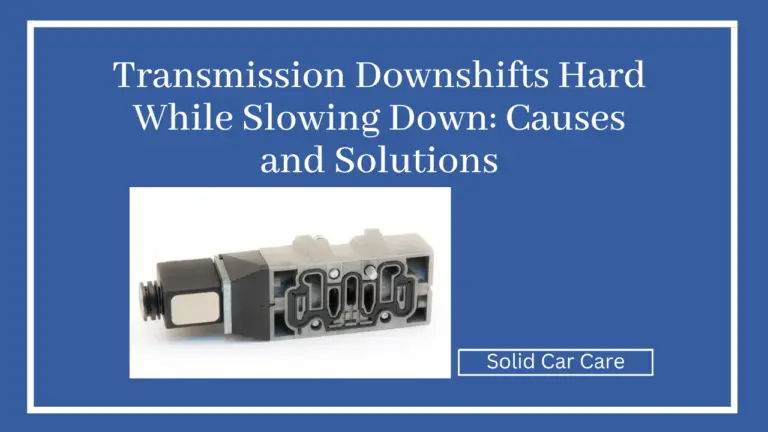What Is “Check AWD System” Notification in Your Toyota Sienna?

Modern vehicles are equipped with advanced systems to enhance safety and performance, and the Toyota Sienna is no exception. One of the key features of the Sienna is its all-wheel drive (AWD) system, designed to provide better traction and control, especially in challenging road conditions. However, like any complex system, the AWD system can experience issues that might trigger warnings, such as the dreaded “Check AWD System” notification.
In this blog post, we’ll dive into what this notification means, its potential causes, the importance of addressing the issue promptly, and preventive measures to ensure your Sienna’s AWD system stays in top condition.
Table of Contents
- What is the AWD light on my Toyota Sienna?
- What does it mean when it says “check AWD system”?
- What Causes “Check AWD System” notification?
- How to fix “check AWD system”?
- How to prevent this notification?
- Is it OK to drive with the AWD light on?
- Conclusion
What is the AWD light on my Toyota Sienna?

The AWD light in your Toyota Sienna is an indicator that illuminates when the vehicle’s all-wheel drive system is active. It signals that power is being distributed to all four wheels, enhancing traction and stability, especially on slippery or uneven surfaces.
When conditions demand increased grip, such as during inclement weather or low-traction situations, the AWD system engages automatically to provide better control. The light serves as a visual confirmation that your Sienna is utilizing its AWD capabilities to optimize performance and safety in various driving environments.
What does it mean when it says “check AWD system“?
When your vehicle’s dashboard displays a “Check AWD System” message, it indicates that there might be a problem or malfunction with your vehicle’s all-wheel drive (AWD) system. The AWD system is responsible for distributing power to all four wheels to optimize traction and stability, especially in challenging road conditions.
Here’s what the “Check AWD System” message could signify:
- System Malfunction: The message could be triggered by a malfunction within the AWD system. This could range from sensor issues to mechanical problems.
- Low Fluid Levels: A low level of AWD system fluid could lead to reduced system functionality and trigger the warning message.
- Sensor Problems: Malfunctioning sensors that monitor the AWD system’s components and operation could lead to the warning message being displayed.
- Mechanical Issues: Any mechanical problems within the AWD system, such as worn components or damaged parts, might lead to this message.
- Electrical Problems: An electrical issue affecting the AWD system’s operation could prompt the warning.
- Safety Concerns: The warning serves as an indicator of potential safety risks. Driving with a malfunctioning AWD system might compromise your vehicle’s stability and traction, especially in adverse conditions.
When you see the “Check AWD System” message, having your vehicle inspected by a qualified mechanic as soon as possible is important.
What Must You Do When The Temperature Light On Your Dashboard Comes On?
solidcarcare.com
What Causes “Check AWD System” notification?
Several factors can trigger the “Check AWD System” notification. These include:
- Low Fluid Level: Just like the engine and transmission, the AWD system requires specific fluid to operate efficiently. If the fluid level is low, it can hinder proper system function, potentially leading to the notification.
- Faulty Sensor: A complex network of sensors monitors various aspects of the AWD system. If any of these sensors malfunction, they might trigger the notification even if the AWD system itself is operational.
- Mechanical Issues: Over time, components within the AWD system may wear out or sustain damage, leading to suboptimal performance and prompting the notification.
How to fix “check AWD system”?
Fixing the “Check AWD System” issue requires proper diagnosis and repair by a qualified mechanic. Here’s a general guide on what steps to take:
1. Consult the Owner’s Manual: Refer to your vehicle’s owner’s manual for guidance on the “Check AWD System” warning. It may provide specific troubleshooting steps or information on what the warning indicates for your particular vehicle model.
2. Check Fluid Levels: In some cases, low fluid levels in the AWD system could trigger the warning. Check the fluid levels according to your vehicle’s specifications. If levels are low, top them off with the recommended fluid. If fluid levels are consistently low, it could indicate a leak that needs to be addressed.
3. Inspect Sensors: Malfunctioning sensors can also trigger the warning. A diagnostic tool can help identify which sensors are causing issues. If a sensor is faulty, it might need replacement.
4. Professional Diagnosis: For more complex issues, such as mechanical or electrical problems, it’s recommended to visit a qualified mechanic or an authorized dealership. They have the expertise and diagnostic equipment to accurately pinpoint the root cause of the “Check AWD System” warning.
5. Repair and Replacement: The mechanic will recommend repairs or replacements depending on the diagnosis. This could involve fixing worn components, replacing damaged parts, or addressing electrical issues.
6. Clearing the Warning: After the issue has been resolved, the mechanic can clear the warning message using diagnostic tools. This ensures that the warning doesn’t persist after fixing the problem.
7. Preventive Measures: Follow manufacturer-recommended maintenance schedules to prevent future occurrences of the “Check AWD System” warning. Regular maintenance can help identify potential issues before they escalate.
Remember that safety is a priority. If you notice the warning while driving and experience unusual handling or instability, it’s wise to pull over in a safe location and contact roadside assistance or a mechanic for guidance.
Overall, resolving the “Check AWD System” issue requires professional expertise to diagnose and fix the underlying problem accurately. Always consult with a qualified mechanic for proper guidance and repair.
How to prevent this notification?
To reduce the likelihood of encountering the “Check AWD System” notification, consider these preventive measures:
- Regular Maintenance: Follow the manufacturer’s recommended maintenance schedule for the AWD system. Regular servicing can help detect and address issues before they become major problems.
- Fluid Level Check: Monitor the AWD fluid level and top it off as needed. Adequate fluid levels are vital for optimal AWD system function.
- Mind Extreme Conditions: While the Sienna’s AWD system is designed for versatility, avoid subjecting it to extreme conditions such as deep snow or heavy mud whenever possible.
Is it OK to drive with the AWD light on?
Driving with the AWD light on is generally safe when it’s due to the system being actively engaged in response to road conditions. This is often the case in situations where additional traction is needed, such as on slippery or uneven surfaces.
However, if the AWD light is on continuously and there’s no apparent reason for it (such as driving in conditions that warrant AWD use), it could indicate a potential issue with the AWD system.
In this case, it’s advisable to have your vehicle checked by a qualified mechanic to diagnose and address any underlying problems. Continuous driving with an unresolved AWD system issue could lead to reduced performance or safety concerns.
Should I drive with AWD on or off?

Whether you should drive with AWD (all-wheel drive) on or off depends on the road and weather conditions you’re facing. Here’s a general guideline:
AWD On:
- Inclement Weather: When road conditions are slippery due to rain, snow, ice, or mud, it’s a good idea to keep your AWD engaged. AWD can provide better traction and stability, improving your vehicle’s control and safety.
AWD Off:
- Normal Conditions: You can typically drive with AWD off in normal driving conditions with dry, well-maintained roads. This can help improve fuel efficiency and reduce wear on the drivetrain components.
It’s important to note that AWD is not a substitute for cautious driving. While it can enhance traction, it doesn’t eliminate the need for safe driving practices in challenging conditions.
What To Do If Gas Overflows While Pumping; Must Read
solidcarcare.com
Conclusion
The “Check AWD System” notification in your Toyota Sienna is a crucial indicator of potential issues within the AWD system. By understanding its causes, addressing the problem promptly, and taking preventive measures, you can ensure your vehicle’s AWD system operates optimally, providing the traction, control, and safety you need in various driving conditions. Always consult a qualified mechanic for accurate diagnosis and necessary repairs when this notification appears.






